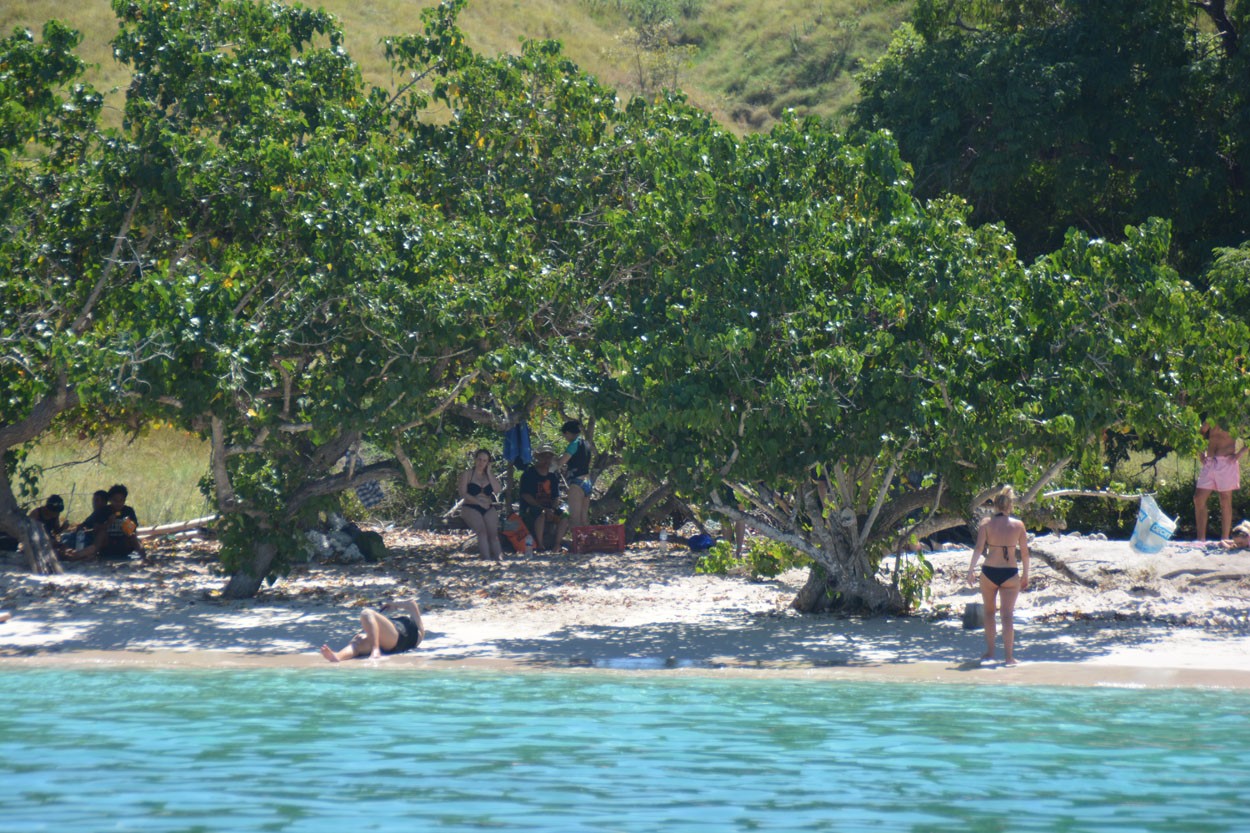Popular Reads
Top Results
Can't find what you're looking for?
View all search resultsPopular Reads
Top Results
Can't find what you're looking for?
View all search resultsGuide to first-time snorkelers in Indonesia
Never donned a mask and a snorkel to discover the underwater world, but curious to try? Follow this guide for a memorable (and safe) experience.
Change text size
Gift Premium Articles
to Anyone
Have you tried snorkeling yet? This fascinating hobby is ideal for exploring the beauty of Indonesia’s waters.
Snorkeling involves swimming in the ocean, using a mask and breathing tube (or snorkel) so you can see and breathe underwater. Read on to find out more about this activity and the best spots for first-timers.
Why snorkeling?
Snorkeling is a great way to enjoy the marine life that's on your doorstep in this archipelago, which has some of the richest marine environments on the planet. You can swim with ocean giants like whale sharks or float above coral reefs to gaze at the multicolored fish below.
If you head out to sea, you can even have the rare experience of snorkeling with great white sharks, sea lions, orcas and other large marine animals.
Snorkeling is ideal for people who want to explore the ocean without committing to the gear, training and expense of scuba diving.
Who can try snorkeling?
Suitable for adults and children, snorkeling is a great activity to try as a family. It also helps adults and children gain confidence in the water.
You can wear a snorkel vest to help keep you afloat, if you’re not comfortable in the water.
What gear do you need?
One of the great things about snorkeling is the few equipment you need. All you really need is a good mask, fins and a snorkel.
That being said, not all gear is equal, and you want to make sure you get the right snorkeling gear for you.
This guide to snorkeling equipment and what to look for is a great place to start.
Read also: Seven lesser-known dive areas in Indonesia
What skills do you need?
Snorkeling is easy to learn, and anyone can give it a try.
It’s a good idea to do some preparation to make the most of it. The more you’re prepared, the more you can explore and fall in love with the ocean.
Go swimming
Before you go snorkeling, practice swimming to make sure you’re comfortable in the water. You can take some lessons at your local pool or just focus on the freestyle technique: kicking your legs is exactly what you’ll do as a snorkeler.
Being a strong swimmer will also mean you won’t need a snorkel vest, giving you that much more freedom and ease of movement.
Practice finning
Swimming with fins is very different to swimming without them, so take the time to practice swimming with fins. It’ll help strengthen your leg muscles and allow you to swim over the reef at a pace that suits you, so you can cover as much of the reef as you want.
Breath holding
You don’t need to hold your breath when you’re snorkeling, as your snorkel allows you to breathe as you swim just beneath the surface of the ocean. If you learn how to dive under the water while snorkeling, you can get closer to the corals and fish below. Being able to hold your breath comfortably will make it easier for you to learn to duck dive.
You can practice holding your breath and even ask your snorkeling instructor to teach you to duck dive. Whatever you decide, the most important thing to remember when snorkeling is to slow down, relax, and let your fins do the work. You want to conserve your energy as much as possible so you can enjoy all that incredible marine life you’re seeing.
Where are the best places for snorkeling?
The Coral Triangle has the highest diversity of marine life in the world. Indonesia sits at the heart of this special area and offers some of the best snorkeling on Earth. Don’t miss it!
Wakatobi, Southeast Sulawesi
Wakatobi has an incredible array of snorkeling opportunities. Shallow house reefs and seagrass beds are literally just off the beaches, where you can go snorkeling with sea turtles and explore reefs teeming with fish.
You can also enjoy dozens of snorkeling spots if you hop on a dive boat and head to the outer reefs. Either way, remember to take your camera. The waters around Wakatobi are absolutely full of life.
Cenderawasih Bay, Papua/West Papua
If you want to snorkel with friendly whale sharks, make sure you visit Cenderawasih Bay. The bay is known for its whale sharks that local fishermen feed for good luck. The sharks are very tolerant of snorkelers and divers in the water.
Komodo National Park, East Nusa Tenggara
Komodo National Park is another top destination for snorkeling, and you can also see the Komodo dragons there. The waters host a variety of marine species including manta rays, seahorses, dolphins and plenty of big fish.
When you’ve had your fill of snorkeling, be sure to visit Komodo’s stunning pink sand beach – one of only seven pink sand beaches in the world.
Raja Ampat, West Papua
If you visit Raja Ampat, you’ll also have a chance to see manta rays, turtles, dolphins and plenty of smaller sharks. The many beautiful islands are dotted with reefs, which also make Raja Ampat an ideal place for taking a snorkeling and dive cruise.
Menjangan Island, Bali
This small island off the northwest coast of Bali is a real hidden gem. Part of the stunning West Bali National Park, it is a great place to try snorkeling and enjoy the pristine reefs.
You can combine a snorkeling trip with exploring the park, so pack your hiking boots as well. (kes)
***
The contributor is a dive travel writer. Follow her adventures at www.kathryncurzon.com.







